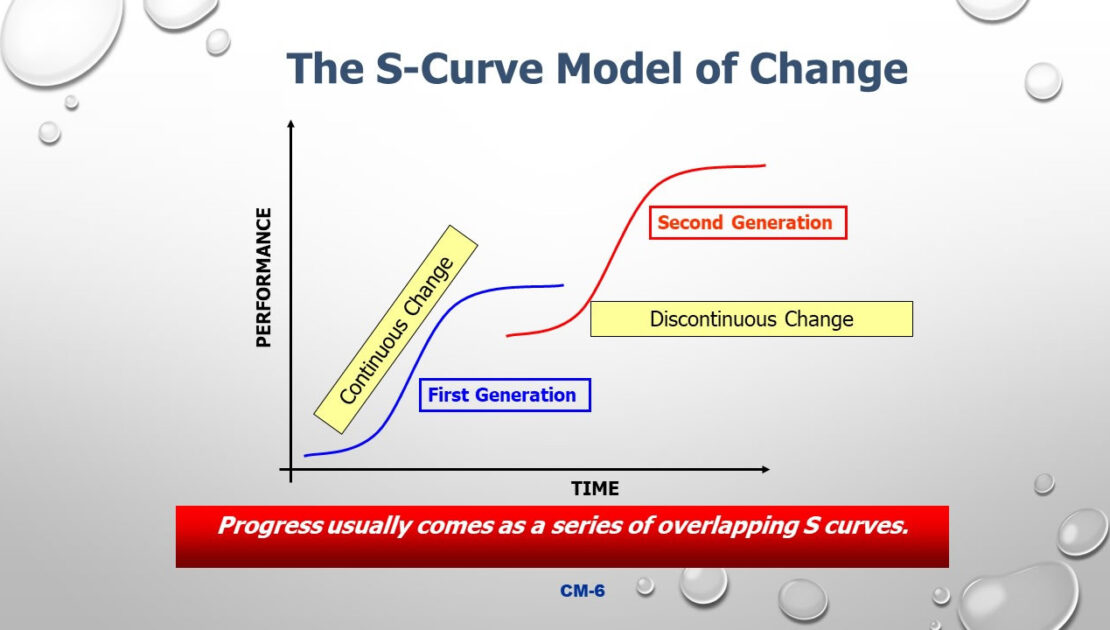first explained by George Land (also George Ainsworth Land) (1927-) is a description of the structure of change in natural systems. Land’s research, detailed in his seminal Grow or Die, illustrates change as a series of interlocking S-curves, each interspersed with two breakpoints. Breakpoints are the moments in time when the rules of survival change.
Two breakpoints per S-curve yield three distinct phases of growth. Phase I is characterized by experimentation, in which the system attempts to find a connection with its environment. It is not unusual for a system (organism, business, relationship) to die before finding this connection.
Assuming this connection is found, the first breakpoint is reached. It is at this point that the rules for success change from experimentation to replication of success. The system must cease searching and begin capitalizing on its connection — food supply, market appeal, common interests — by simply repeating its formula for success. In Phase II, the system enjoys tremendous growth, limited only by the environment that provides resources for that growth.
Assuming the system is allowed this ideal growth without unexpected changes, it eventually consumes those resources. This is often disconcerting to conscious systems; in Land’s terms, “nothing fails like success.” At this second breakpoint the (successful) system enters a bifurcation: it begins to open up to innovative changes, to accept information or resources that were explicitly rejected in Phase II, and it simultaneously reinvents itself. A new S-curve is born at the second breakpoint.
Mapping this theory to business yields these familiar conditions: Entrepreneurship, Success and Growth, Diversification. Mapping to the creative process, it yields three distinct approaches to problem solving: Invention, Improvement, Innovation. Land’s unique contribution is that he clearly differentiates three different sets of rules for survival; the implication is that the system must be aware of which set of rules are currently operative.
Land’s theory is useful in the planning and execution in systems large and small: what phase is the system currently in? What form of creative thinking is required? How do we know when the rules of survival have changed?

